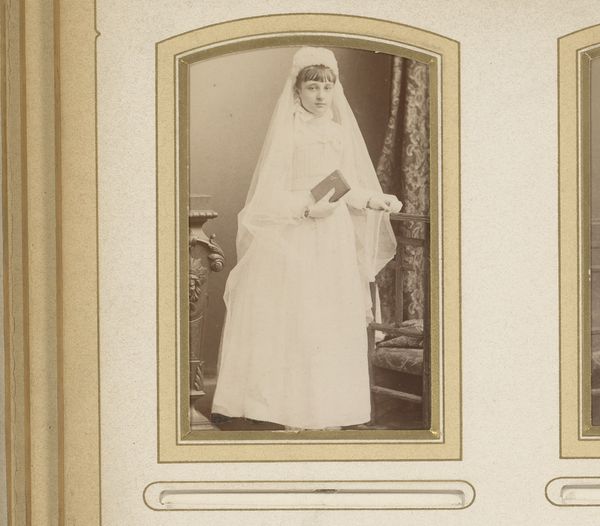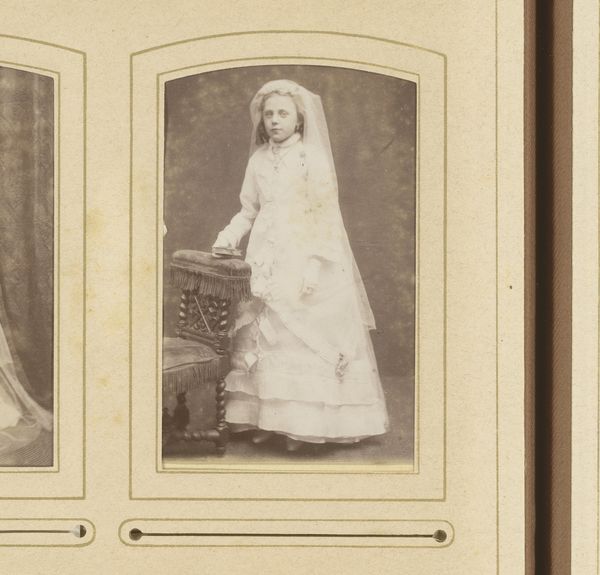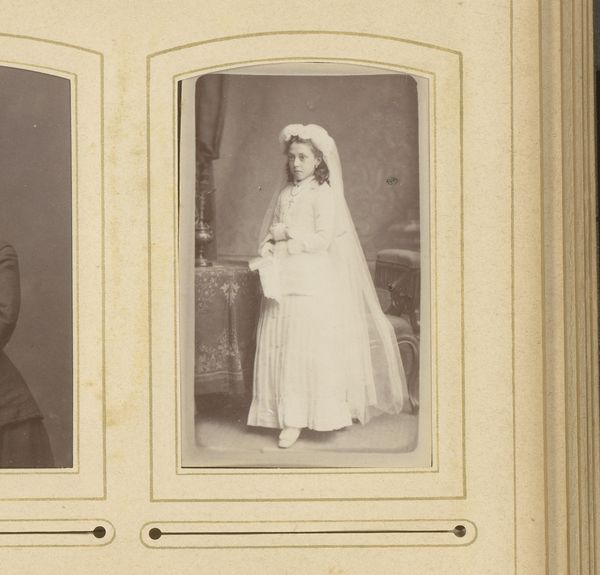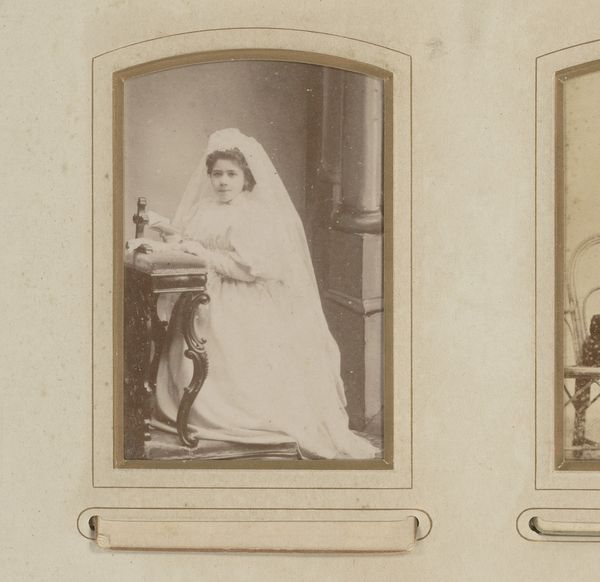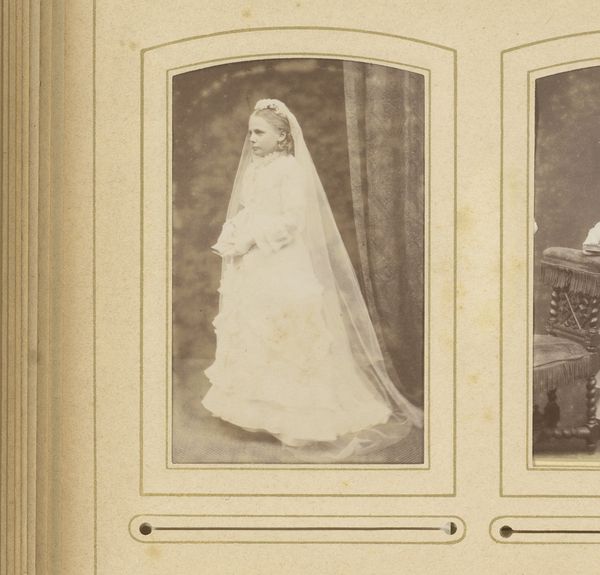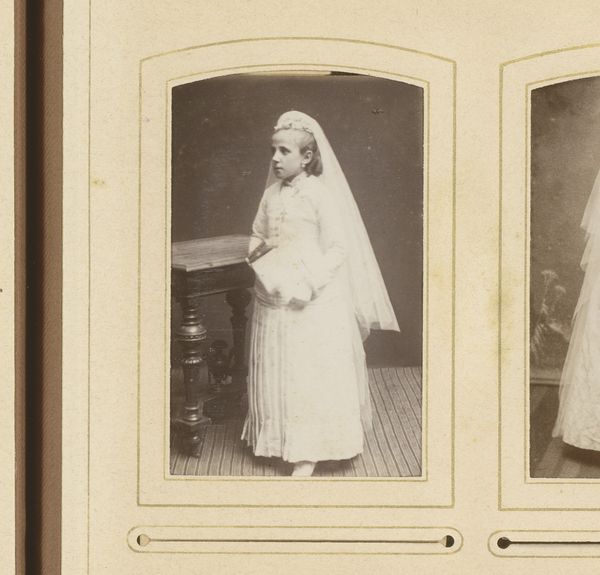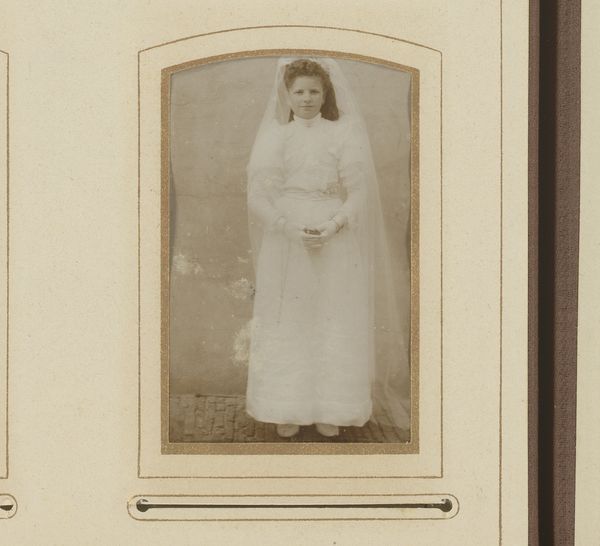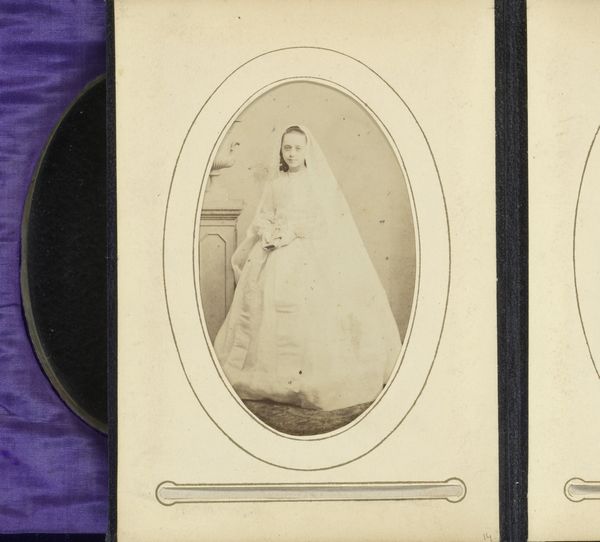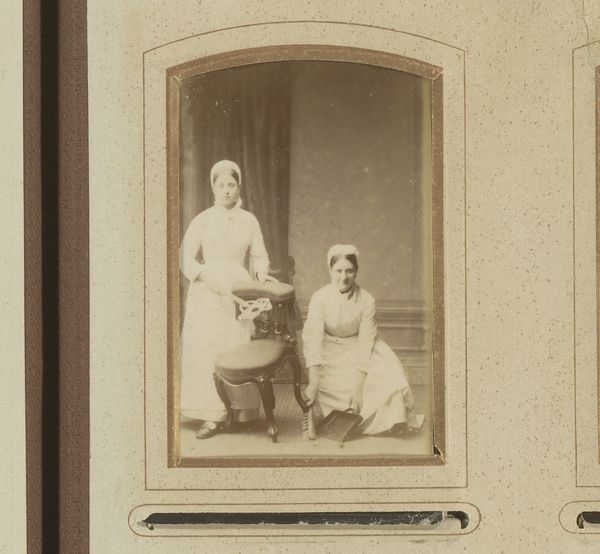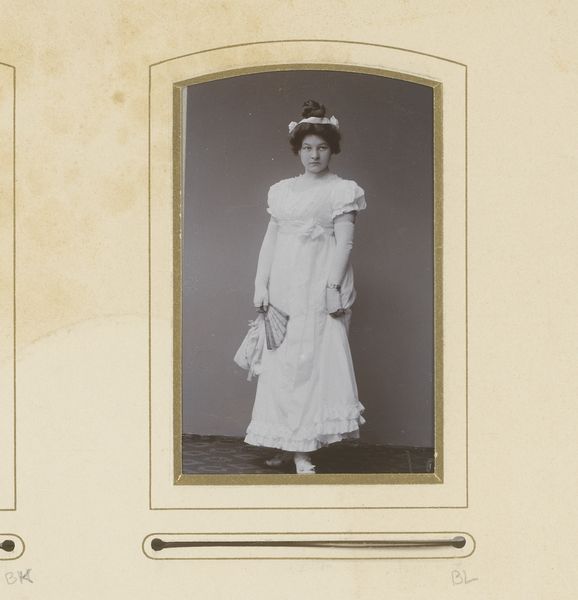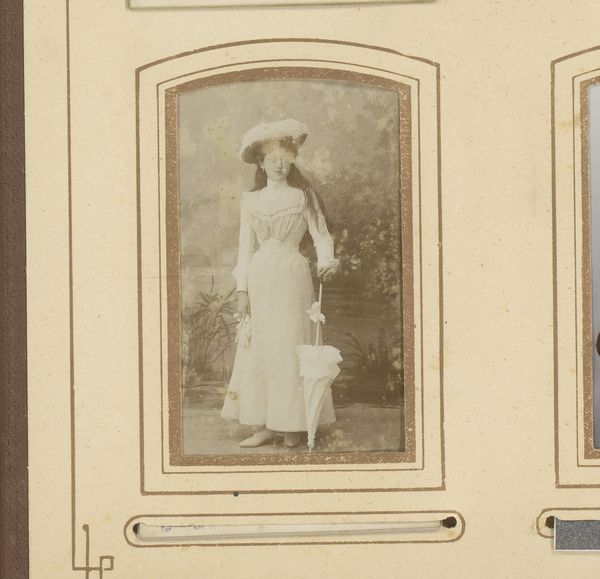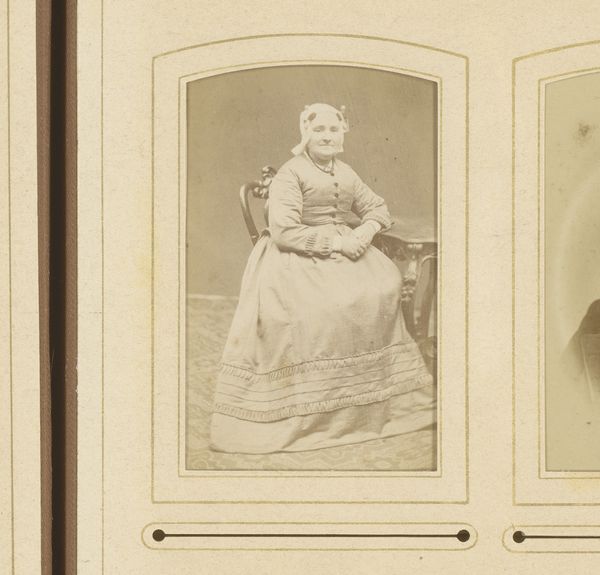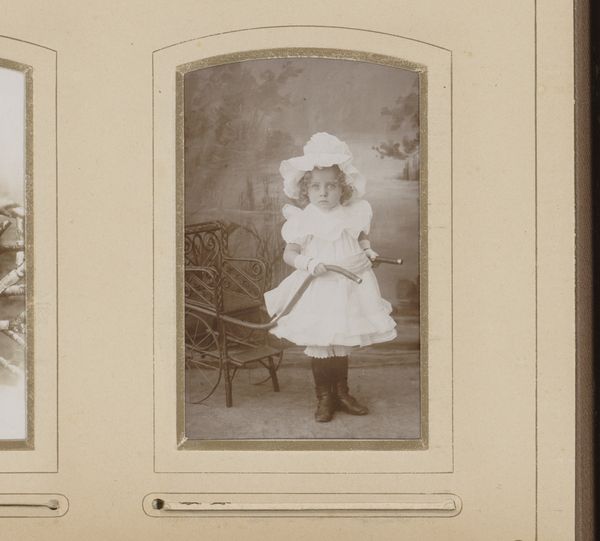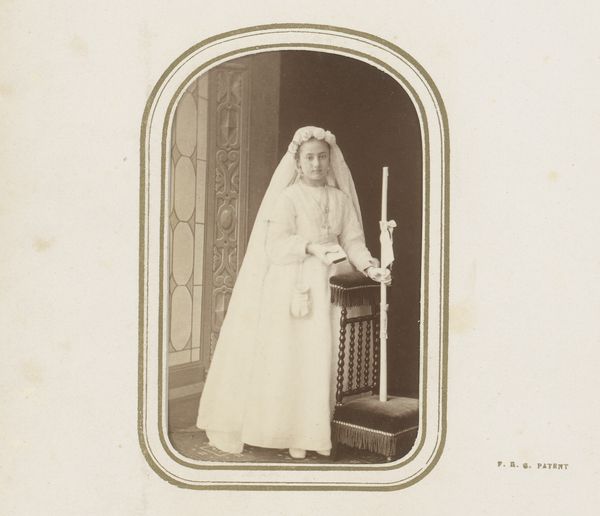
Portret van een meisje in communiejurk, staand bij een stoel 1868 - 1900
0:00
0:00
photography
#
portrait
#
photography
Dimensions: height 85 mm, width 53 mm
Copyright: Rijks Museum: Open Domain
Editor: Here we have a photographic portrait, "Portret van een meisje in communiejurk, staand bij een stoel," which translates to "Portrait of a girl in communion dress, standing by a chair," created sometime between 1868 and 1900 by Hermanus Jodocus Weesing. The young girl is dressed in a beautiful white gown with a veil. I am curious, what do you find most striking about this piece? Curator: It's interesting to consider how this photograph participates in the burgeoning visual culture of the late 19th century. The act of commissioning such a portrait was becoming increasingly accessible to the middle class. The presentation here is fascinating; what societal roles and aspirations do you think are being constructed through this image? Editor: It definitely seems like this image is very deliberate and planned. The act of photographing this event was not just about documenting but really presenting it. She has her formal gown, white gloves and seems like a perfect posture! But also... is she forced into being what is in trend for these rituals? What message do you think these type of rituals imposed to the women? Curator: Exactly! The 'staging' here reveals so much about the period's social values. While seemingly simple, portraits like this helped construct and reinforce norms about innocence, piety, and perhaps most interestingly, about class and status. The setting itself and the girl's attire speaks volumes of what expectations were at the time. But, on the other hand, the act of making the picture seems a strong gesture to defy the future by solidifying its presence. The very existence of these ritual pictures can reveal not just power, but self-preservation mechanisms that help challenge this social position. Editor: I see, it's a complex interplay of adhering to societal expectations, and a form of individual declaration of intention in that specific timing... Curator: Absolutely. It is a carefully constructed image intended to convey a specific message about the subject and the family within the Victorian society of the time. It serves both as a public declaration of belonging and individual aspirations for change! Editor: That’s fascinating. I've certainly learned to consider such photographs as more than just pretty pictures; it also opens new perspectives. Thanks!
Comments
No comments
Be the first to comment and join the conversation on the ultimate creative platform.
